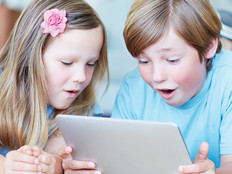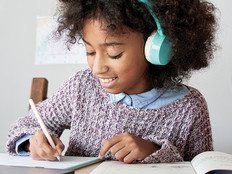NASA Educator Sees Bright STEM Future in 3D Printing
Five years ago, NASA’s Todd Ensign printed his first 3D model. He immediately understood the technology’s appeal — how the tool could turn an idea into reality — and what students could do with it if given the chance.
Now, he’s taking that spark of interest and teaching educators how to share the possibilities of 3D printing with students in K–12 classrooms. He hopes opening that door of creation for students might be a turning point for their careers.
"They can invent anything,” Ensign says. “They’ve designed it, and then through the printer, it's like it's coming alive before them.”
Ensign works at NASA’s Independent Verification and Validation Center in Fairmont, W.Va., testing alternative materials for improved aviation designs — custom wings, rocket caps and more. At NASA, 3D printing technology is called additive manufacturing, and it’s been a game-changer for his industry, Ensign says.
But, he says, the technology could have an equally transformative effect on education, if put into the right hands.
"I want students doing this as often as possible because it really captures their imagination,” he says.
Partnerships for Education
In April, Ensign taught a one-day workshop on 3D printing that combined the resources of a local industry, the minds of local educators and lessons on aviation from NASA. He trained 30 teachers from the region on how 3D printing models could be designed and used for K–12 lessons.
During the seminar, educators tapped into NASA’s Museum-in-a-Box series of lessons on aviation and physics to create concepts that could be used on a monster 3D printer, courtesy of the Robert C. Byrd Institute for Advanced Flexible Machinery (RCBI).
Reinforcing STEM-based lessons like these will be crucial in preparing the next generation for modern technology jobs, says RCBI CEO Charlotte Weber.
Successful completion of the course allows teachers to borrow a $1,000 kit of STEM-based learning activities from NASA. The class also empowers teachers to bring student-created models to life using the site’s printer, which is something Ensign always loves seeing.
Word spread quickly about the workshop’s success, and another session planned for the fall is already booked up, he says.
A Boost to STEM
"It's such a compelling tool, I feel like it could achieve our goal to generate more student enrollment in STEM careers,” Ensign said. “We are facing a huge shortage in those careers as the baby boomers are retiring.”
While Ensign’s workshop was limited to West Virginia, he sees the potential for this kind of program across the country. Access to 3D printing technology is growing. Schools, businesses and even public libraries have 3D printers of their own. MakerBot has made education a priority, offering their Replicator 2 model to schools at a discounted price.
All that’s missing is the educational know-how.
Students and teachers can download thousands of free 3D models through Thingiverse, and MakerBot has its own classroom-based models ready for consumption — including a frog dissection kit and the Great Pyramid of Giza.
Learn more about NASA’s Museum-in-a-Box curriculum on its website.








